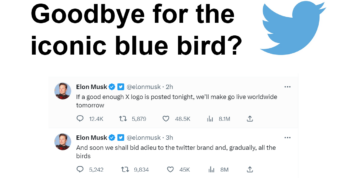As micro-blogging platform Twitter marks its tenth birthday, it has a lot to celebrate. In the decade since Twitter co-founder Jack Dorsey sent the world’s first tweet, the service has grown to take on a sizable role in the ways that people communicate and companies market themselves, and it has even helped shape political movements.
Twitter appeals to a broad range of users, whether it’s people who want to know what their favorite celebrities are doing or politicians who want to get their messages out to the masses. It played a key role in the Arab Spring movement and helped spark viral campaigns such as the ALS Ice Bucket challenge.
Enormous marketing potential
This mass appeal makes it a natural fit for advertisers who want to reach the people who will be most receptive to their messages. Its 140-character limit, which was once seen as a drawback, has turned out to be one of its biggest positives. The ability to make short and quick statements is perfectly suited to live commentary and easy for people to read even when they don’t have a lot of time.
Last year, Twitter managed to snag $2.2 billion in revenue (albeit with a $521 million net loss). Most of this came from advertisers. It is not all smooth sailing for Twitter, however, and many observers are questioning how the company will be able to move forward in the face of a stagnating user base and monetization woes.
The platform has 320 billion monthly users, which sounds like a lot but pales in comparison to Facebook’s 1.6 billion. Perhaps one of the biggest things in Twitter’s favor is the fact that 500 million people come to it apart from its active user base, and advertisers are increasingly drawn to it because it gives them the ability to serve ads to people who are not even logged in to the service.
Room to grow
Influencer marketing firm Webfluential’s Head of Global Operations, Kirsty Sharman, applauds the service for its utility to marketers but feels it still has room to grow in this regard.
She said: “However, on a much more profound level, Twitter has also played a critical role in the rise of influencer marketing in the last number of years. In a world where ad blocking is costing the publishing industry nearly £15.5 billion in lost revenue, influencer marketing is increasingly seen as a way to circumvent this problem, especially with some campaigns generating at a 6:1 return on investment.”
Sharman feels the way forward for Twitter is to focus on investing in the content creation and influencer spaces and try to indirectly capture some of the money that is being spent in these areas. To mark Twitter’s anniversary, her firm launched a free calculator that shows users how much they can earn per tweet along with a WordPress plugin that helps influencers take job bookings.
As Twitter enters its second decade of existence, it’s likely to put a much bigger focus on marketing if it wants to stay afloat and reach its next milestone birthday.





